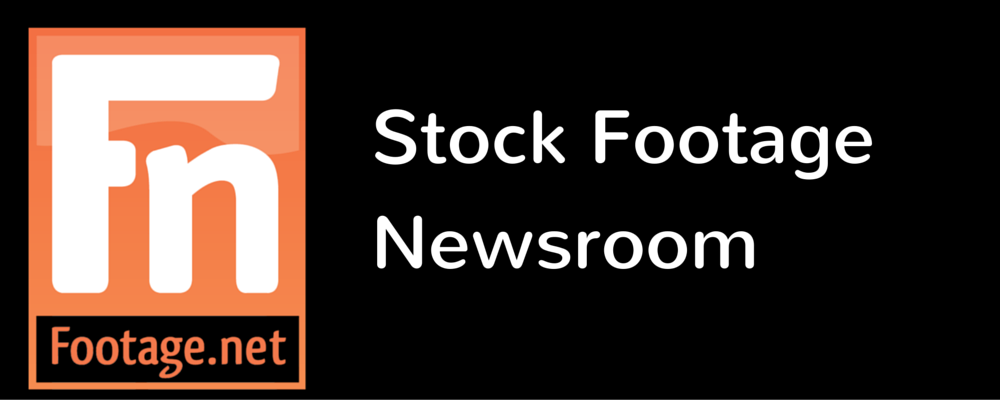Breaking News from the Black Sea: The Sherman Grinberg Film Library's Ukrainian Collection
/The following article is by Laurel Day, a recent graduate of Ryerson University’s Film + Photography Preservation and Collections Management program, where she wrote her thesis on documentaries and features produced by the Polish People’s Republic (1947-1989) and screened at the Polish Consulate in Toronto.
As the world has watched in horror at the Russian invasion of Ukraine for three weeks, scholars have raised concern not just about the survival of the two million plus refugees who have fled but also the war’s impact on historical and cultural memory. The former Soviet Union not only doctored official photographs of individuals who dissented against the government, as Masha Gessen highlights in the New Yorker of Leon Trotsky’s erasure from photographs with Vladimir Lenin,[1] they extended their control and manipulation of history to archival accessibility and education. As a result, circumstances like former KGB archivist Vasili Mitrokhin’s defection to the United Kingdom in 1992 and donation of the defunct intelligence agency’s duplicated records to MI5[2] strike fear in propaganda ministries who rely on ignorance and erasure of history in order to promote and validate their agenda.
Writing in The Washington Post on the Russian government’s eviction and prosecution of Memorial, a non-profit dedicated to preservation of communist-era human rights atrocities, Vladimir Kara-Murza illustrates that President Vladimir Putin and his allies “can shut down formal structures and withdraw licenses - but it cannot erase memory.”[3] While the long-term survival of cultural memory institutions in Ukraine has become uncertain as a result of war, audiovisual archives must make accessible their own collection of footage that illuminates viewers about Ukrainian-Russian relations since the 1917 Revolution as well as footage that highlights past Russian misinformation campaigns.
As a result, archives have a duty to promote media literacy, and the Sherman Grinberg Film Library possesses digitized footage that both exhibits western hesitancy towards cooperation with the USSR and the Soviet government’s omission of events that would have sullied their image.
One notable English language newsreel shot in Ukraine is a Greatest Headlines of the Century segment from 1960 reflecting on the 1945 Yalta Conference in a conflicted tone. Following the recurring newsreel’s introduction, the clip cuts from tranquil scenes of villas along the Black Sea to imagery of young Red Army soldiers arranging for security and ceremonial welcomes of Franklin Delano Roosevelt and Winston Churchill to the region. Set to a sentimental string soundtrack, the narration details how the meeting among Roosevelt, Churchill, and Joseph Stalin to quickly end the Second World War would “shape tomorrow’s world” through the “extermination of Nazi Germany,” revealing the hope that many had for the war’s end. However, the style of the music slows down and becomes more sinister as the narrator details how many believed that Roosevelt and Churchill appeased Stalin by permitting the Red Army’s continued occupation of Poland and other Eastern European countries previously under Nazi control. The segment ends with a mid-shot of Stalin who, sitting next to Roosevelt, “was not a man to be trusted, as the world was to find out to its great sorrow” before fading out.
While such characterization may be obvious for those who have studied the period between the Second World War and the Cold War, Grinberg’s Greatest Headlines clip epitomizes the privilege of viewers outside the former Soviet Union and other communist states to be able to refresh their memories of the Yalta Conference from a nuanced perspective.
On the other hand, the vast majority of Grinberg’s Ukraine-set materials in Russian reinforce how the former Soviet Union relied on misdirection by simply not referencing information that would damage their reputation in favor of technological and wartime achievements. Although Paramount News sold reels to the Soviet Union, the partnership did not stop Russian propaganda bureaus from manipulating the footage and narration to corroborate imagery of their leaders as innovators and liberators. At the same time as the grand opening of the Dnieprostroi Dam in Zaporizhzhia in October 1932, Stalin was overseeing quotas on grain farms that engineered the starvation of Ukrainians during the Holodomor famine of 1932-1933, during which millions died.[4] Although Russian distributions of Paramount newsreels would later praise the efforts of Ukrainians digging trenches and making bombs against Nazi invaders in 1941, newsreels produced two years later to document the Red Army’s triumph over Nazis in Kyiv opt for shots of Ukrainian civilians walking through the streets and thanking Soviet soldiers for their help as they greet them. One cannot help but think of similar paradoxical methods that the Russian press uses to frame what is happening today.
While looking through the Ukraine-set collection of the Sherman Grinberg Film Library may trigger cynicism and despair, the war in Ukraine is also inspiring many to learn more about the country’s rich history of endurance and resistance. By distributing historical newsreels and fact-checking propaganda, archives are able to contribute to a dictatorship’s worst nightmare: education and awareness, which may ultimately inspire action and revolution.
[1] Gessen, Masha, “The Photo Book That Captured How the Soviet Regime Made the Truth Disappear,” in The New Yorker, July 15, 2018, https://www.newyorker.com/culture/photo-booth/the-photo-book-that-captured-how-the-soviet-regime-made-the-truth-disappear.
[2] Norton-Taylor, Richard, “Soviet files: KGB defector’s cold war secrets revealed at last,” in The Guardian, July 7, 2014, https://www.theguardian.com/world/2014/jul/07/kgb-defector-cold-war-vasil-mitrokhin-notes-public.
[3] Kara-Murza, Vladimir, “The Kremlin is trying to erase Russia’s collective memory. It won’t succeed,” in The Washington Post, December 22, 2021, https://www.washingtonpost.com/opinions/2021/12/22/kremlin-is-trying-erase-russias-collective-memory-it-wont-succeed/.
[4] “Holodomor Basic Facts,” Holodomor Research and Education Consortium, accessed March 10, 2022, https://holodomor.ca/resource/holodomor-basic-facts/.




